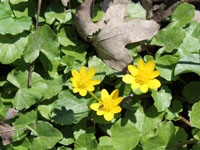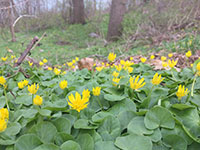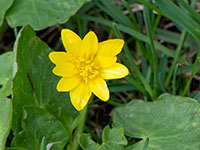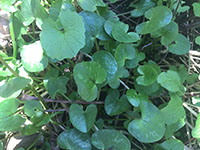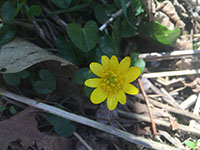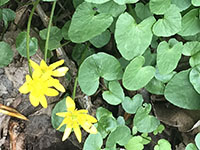![]()
Lesser Celandine is a low-growing, hairless perennial flowering plant belonging to the buttercup family (Ranunculaceae). It is easily recognizable by its fleshy, dark green leaves and bright yellow flowers, which add early-season color to its natural habitat. Native to Europe and western Asia, Lesser Celandine has also been introduced to North America, where it is commonly referred to as fig buttercup. However, in many regions of North America, this plant is considered invasive due to its ability to spread aggressively and outcompete native flora. The species has sometimes been referred to as the "spring messenger" in historical texts, a name that highlights its early bloom time, often signaling the arrival of warmer weather.
Due to its invasive nature, various conservation authorities in North America strongly discourage planting Lesser Celandine. Instead, they recommend growing native ephemeral wildflowers, which support local ecosystems and prevent the displacement of indigenous species. Lesser Celandine’s rapid growth and dense coverage allow it to dominate landscapes, preventing early-blooming native plants from thriving by overshadowing them and monopolizing resources. The plant’s genus name, Ranunculus, roughly translates to "little frog," a reference that may allude to the preferred damp habitats of some members of the genus or to the shape of the plant’s leaves. The species name, Ficaria, means "fig," possibly in relation to the shape of the plant’s tubers. While Lesser Celandine may be admired for its vibrant appearance and early blooms, its ecological impact in non-native regions makes it a species of concern for conservationists and ecologists alike.
![]()
There is currently no commercial application for lesser celandine.
![]()
In the fields of rational and holistic medicine, Lesser Celandine has historically been utilized for the treatment of hemorrhoids and ulcers. The entire plant, including its roots, possesses astringent properties, which have made it a traditional remedy for various ailments. It is typically harvested during its flowering period in March and April, after which it is dried for future medicinal use. One of its most common applications is as a treatment for piles, where it has been widely used in folk medicine. Lesser Celandine can be prepared as an infusion for internal consumption, although this practice is not professionally recommended due to the plant’s toxic components. Alternatively, it can be processed into an ointment for external application, which is considered a safer approach to harnessing its medicinal properties. Despite its historical use, modern medical professionals caution against internal consumption of Lesser Celandine, as it contains several toxic compounds that can pose health risks. Additionally, the plant may cause skin irritation, particularly in individuals with sensitive skin. As a result, while it remains a well-known herbal remedy, its use is now approached with caution, and safer, professionally approved alternatives are generally recommended.
Please note that MIROFOSS does not suggest in any way that plants should be used in place of proper medical and psychological care. This information is provided here as a reference only.
![]()
In early spring, the young leaves of Lesser Celandine have historically been used as a food source, either raw or cooked, and have been valued as a nutritious potherb. The first tender leaves of the season are particularly sought after for their mild flavor and are often incorporated into salads. Additionally, the leaves, stalks, and buds can be prepared similarly to spinach, offering a versatile ingredient for various dishes. Even the blanched stems have been consumed as a vegetable, providing another means of utilizing the plant’s early spring growth. However, while these young leaves have been traditionally eaten, caution is necessary when considering Lesser Celandine as a food source.
As the plant matures and its fruit develops, the leaves become toxic, rendering them unsafe for consumption. This toxicity is attributed to the presence of harmful compounds that can cause adverse effects if ingested. Due to these risks, the use of Lesser Celandine as an edible plant is generally discouraged unless proper identification and preparation methods are followed with extreme care.
Please note that MIROFOSS can not take any responsibility for any adverse effects from the consumption of plant species which are found in the wild. This information is provided here as a reference only.
![]()
Lesser Celandine thrives in a variety of environments but is most commonly found in shaded areas, along streams and waterways, and in disturbed or waste places where it can quickly establish itself. It is highly adaptable and can grow in different soil types, including light sandy soils, medium loamy soils, and even heavy clay soils, making it a resilient species in diverse conditions. The plant is also tolerant of a broad pH range, growing well in acidic, neutral, and basic (alkaline) soils. While it prefers moist soil, it can also grow in areas with semi-shade, such as light woodlands, or even in open, unshaded locations. One of the notable ecological aspects of Lesser Celandine is its ability to attract pollinators, particularly honeybees and bumblebees, which are drawn to its bright yellow flowers in early spring. As an early bloomer, the plant provides an important nectar source when other floral resources may still be scarce. However, despite its appeal to pollinators, Lesser Celandine’s invasive nature in some regions raises concerns about its impact on native plant species and ecosystem balance.
| Soil Conditions | |
| Soil Moisture | |
| Sunlight | |
| Notes: |
![]()
Lesser Celandine is a low-growing perennial plant that typically reaches a maximum height of about 25 centimeters. Its leaves are fleshy, heart-shaped (cordate), and have a rich dark green color, which provides a striking contrast to its bright yellow flowers. The flowers are particularly distinctive, featuring glossy petals that give them a shiny, almost waxy appearance, making them stand out in the early spring landscape.
The species Ranunculus ficaria exists in two chromosomal forms: diploid (2n=16) and tetraploid (2n=32), both of which are very similar in overall appearance. However, there are some notable differences between them. The tetraploid form is more commonly found in shadier environments and often develops small bulbils at the base of the stalk, which can aid in vegetative reproduction. These two forms are sometimes recognized as distinct subspecies, with the diploid form retaining the name Ranunculus ficaria and the tetraploid form referred to as Ranunculus ficaria bulbilifer. Despite their slight differences, both variants share the same general growth habits and are widely distributed in their native and introduced ranges.
![]()
| Plant Height | 12cm to 25cm | 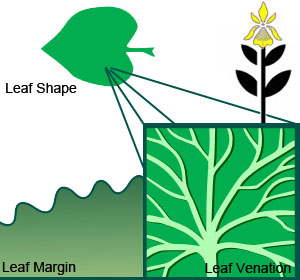 |
| Habitat | Shorelines, waste places, lawns, bare disturbed ground | |
| Leaves | Cordate 3cm to 6cm long | |
| Leaf Margin | Sinuate | |
| Leaf Venation | Palmate | |
| Stems | Smooth stems | |
| Flowering Season | March to May | |
| Flower Type | Bilaterally Symmetrical | |
| Flower Colour | Yellow | |
| Pollination | Bees, Insects | |
| Flower Gender | Flowers are hermaphrodite and the plants are self-fertile | |
| Fruit | Small seeds in a swollen capsule | |
| USDA Zone | 4A (-31°C to -34°C) cold weather limit |
![]()
The following health hazards should be noted when handling or choosing a location to plant lesser celandine:
 |
TOXICITY Lesser celandine contains toxic chemicals which can cause illness or death if the plant is not prepared properly. |
 |
SKIN IRRITANT |
 |
INVASION ALERT |
![]()
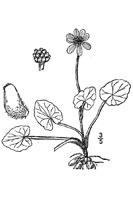 |
-Click here- or on the thumbnail image to see an artist rendering, from The United States Department of Agriculture, of lesser celandine (This image will open in a new browser tab) |
![]()
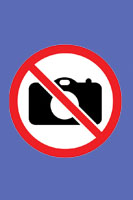 |
There is currently no seed or bulbs images for lesser celandine in the MIROFOSS database. |
![]()
Lesser Celandine can be referenced in certain current and historical texts under the following two names:

![]()
 |
What's this? What can I do with it? |
![]()
| Dickinson, T.; Metsger, D.; Bull, J.; & Dickinson, R. (2004) ROM Field Guide to Wildflowers of Ontario, Royal Ontario Museum, Toronto:McClelland and Stewart Ltd. | |
| Swearingen, J., K. Reshetiloff, B. Slattery, and S. Zwicker (2002). "Lesser Celandine". Plant Invaders of Mid-Atlantic Natural Areas. National Park Service and U.S. Fish & Wildlife Service, Washington, D.C. | |
| Hatfield. A. W. How to Enjoy your Weeds. | |
| F. Chittendon. RHS Dictionary of Plants plus Supplement. 1956 | |
| USDA-NRCS PLANTS Database / USDA NRCS. Wetland flora: Field office illustrated guide to plant species. USDA Natural Resources Conservation Service. | |
| National Audubon Society. Field Guide To Wildflowers (Eastern Region): Alfred A. Knopf. ISBN 0-375-40232-2 | |
| February 23, 2025 | The last time this page was updated |
| ©2025 MIROFOSS™ Foundation | |
 |
|

